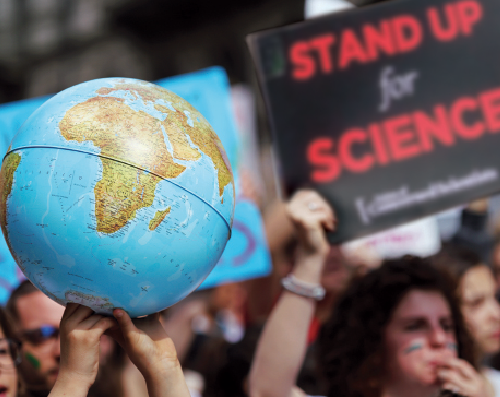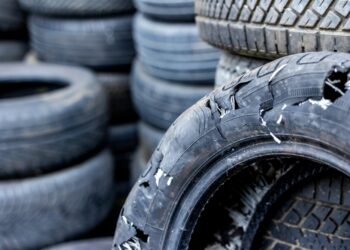Public protests act as a call for change. But they also signify the fact that significant societal shifts have already occurred.
Take, for example, the global climate strike that took place Sept. 20. Huge numbers took to the streets in the student-led demonstrations – estimates put participation between 4 million and 7.6 million worldwide – in a push for meaningful action around reductions in greenhouse gas emissions.
The size, energy and media attention around those crowds can be seen as a turning point in the climate change discussion. It’s no longer just scientists or staunch environmentalists who are out there yelling. The repercussions of a warming planet are now a major concern among the masses, especially the masses under the age of 30.
Of course, the events of Sept. 20 themselves will not immediately transform our ability to tackle one of the most challenging problems to ever confront human beings. In September, the Washington Post and Kaiser Family Foundation released results from a national poll that showed that 76% of U.S. adults view climate change as a major problem but fewer than 50% would be willing to pay an extra $2 per month on electricity bills to combat a warming world.
Nonetheless, the strike did represent a sort of inflection point. It seems clear that in the coming years and decades, climate progress is going to be an expectation citizens will have of all their elected officials.
And recycling is well-positioned for this paradigm.
The U.S. EPA, for example, has stated that increasing our national recycling rate by seven percentage points would reduce greenhouse gas emissions by 9.8 million metric tons of carbon equivalent, roughly the same as the energy used by 1 million homes each year.
StopWaste, the public agency that leads materials recovery efforts for California’s Alameda County, notes that 4 tons of CO2 is kept out of the atmosphere for each ton of old corrugated containers kept out of the landfill.
And the American Chemistry Council has reported that all the PET and HDPE containers recycled in 2008 led to 2.1 million tons of carbon equivalent being saved due to recycled resin displacing virgin in the manufacturing process. That level of carbon savings is comparable to taking 360,000 cars off the road, according to a report from the group.
Similar statistics can be found for virtually every material type in the recycling stream. And such numbers are going to increasingly resonate with the individuals sorting their household discards and with leaders looking to stay in line with those residents’ values.
The refrain from recycling coordinators, facility operators and others in our industry can be short and sweet: Curbside recycling curbs emissions. Such outreach is easy to convey and can be backed by every player who has a stake in recycling’s growth.
However, the intersection of climate change and materials management doesn’t end there. And as we push deeper, we are likely to encounter more complicated conversations inside the industry.
On stage at this summer’s Resource Recycling Conference and Trade Show in New Orleans, Kate Bailey of Colorado-based MRF operator and waste education group Eco-Cycle made the point our sector’s biggest emission-reduction potential can be realized not through waste diversion but through waste minimization.
“Our consumption, the way we use our stuff, is almost 40 percent of the GHG impacts in the U.S. if you break it down by how our energy is actually used,” Bailey said. “We are a huge solution to the climate crisis and we’re not talking about that. We’re just looking at landfill emissions and the waste sector.”
A big reason we tend not to talk openly about reducing consumption and materials usage on a macro scale is that pushing for minimization seems to be bad for business, at least when our focus remains narrow.
Less stuff in the waste stream – regardless of whether it’s going to landfill, recycling or compost – is clearly problematic for the operators of disposal and processing sites that get paid by the ton. It’s also an issue for brand owners and packaging manufacturers that are under pressure to increase the volumes of goods they pump into the market.
Reductions in material use can also be bad news for municipalities that rely on landfill tip fees to pay for recycling or other programs.
The realities of reducing material use get even more nuanced as we enter the realm of sustainable materials management, which aims to assess the whole life cycle of a package or product. For example, research from the Oregon Department of Environmental Quality has shown that in certain packaging applications, recyclable packaging isn’t always the best from a carbon emissions standpoint – a non-recyclable pouch that minimizes material use and weight, for example, could be a wiser selection than bulkier packaging that is widely recoverable or made with recycled content.
This is all to say that while recycling currently harmonizes well with calls for climate action, the industry must also understand that things might not always remain that way.
During last month’s climate marches, one recurring theme on the signs of protesters young and old was a dedication to scientific analysis. Research and data are the primary tools that have quantified the realities of global warming and – quite rightly – brought the issue to crisis mode in the eyes of so many.
A similar sense of scientific analysis will be expected to be carried out around how we manufacture, use and handle materials. And the science is making it clear that if our ultimate goal is to maintain the well-being of Earth’s ecosystems and people, waste minimization is a far more important endeavor than waste diversion alone.
Taking the long view, such a strategy is also wise from a business standpoint.
The next generation of voters and decision-makers is making it clear that all choices we make must be viewed through the lens of limiting emissions to the greatest degree possible. If recycling programs and companies want to be ready to serve those leaders of tomorrow, they need to start looking through an “emissions first” lens right now.
Dan Leif is the managing editor of Resource Recycling. He can be contacted at [email protected].
This article originally appeared in the October 2019 issue of Resource Recycling. Subscribe today for access to all print content.


























